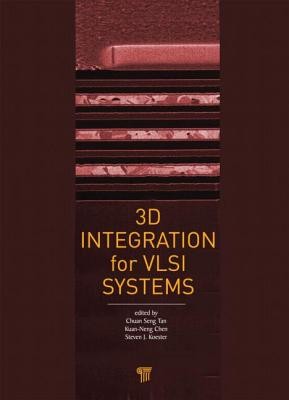
- We will send in 10–14 business days.
- Publisher: Jenny Stanford Publishing
- Year: 2011
- Pages: 369
- ISBN-10: 981430381X
- ISBN-13: 9789814303811
- Format: 15.2 x 22.9 x 2.2 cm, hardcover
- Language: English
- SAVE -10% with code: EXTRA
3D Integration for VLSI Systems (e-book) (used book) | bookbook.eu
Reviews
Description
Three-dimensional (3D) integration is identified as a possible avenue for continuous performance growth in integrated circuits (IC) as the conventional scaling approach is faced with unprecedented challenges in fundamental and economic limits. Wafer level 3D IC can take several forms, and they usually include a stack of several thinned IC layers that are vertically bonded and interconnected by through silicon via TSV.
There is a long string of benefits that one can derive from 3D IC implementation such as form factor, density multiplication, improved delay and power, enhanced bandwidth, and heterogeneous integration. This book presents contributions by key researchers in this field, covering motivations, technology platforms, applications, and other design issues.
EXTRA 10 % discount with code: EXTRA
The promotion ends in 20d.07:54:32
The discount code is valid when purchasing from 10 €. Discounts do not stack.
- Publisher: Jenny Stanford Publishing
- Year: 2011
- Pages: 369
- ISBN-10: 981430381X
- ISBN-13: 9789814303811
- Format: 15.2 x 22.9 x 2.2 cm, hardcover
- Language: English English
Three-dimensional (3D) integration is identified as a possible avenue for continuous performance growth in integrated circuits (IC) as the conventional scaling approach is faced with unprecedented challenges in fundamental and economic limits. Wafer level 3D IC can take several forms, and they usually include a stack of several thinned IC layers that are vertically bonded and interconnected by through silicon via TSV.
There is a long string of benefits that one can derive from 3D IC implementation such as form factor, density multiplication, improved delay and power, enhanced bandwidth, and heterogeneous integration. This book presents contributions by key researchers in this field, covering motivations, technology platforms, applications, and other design issues.


Reviews